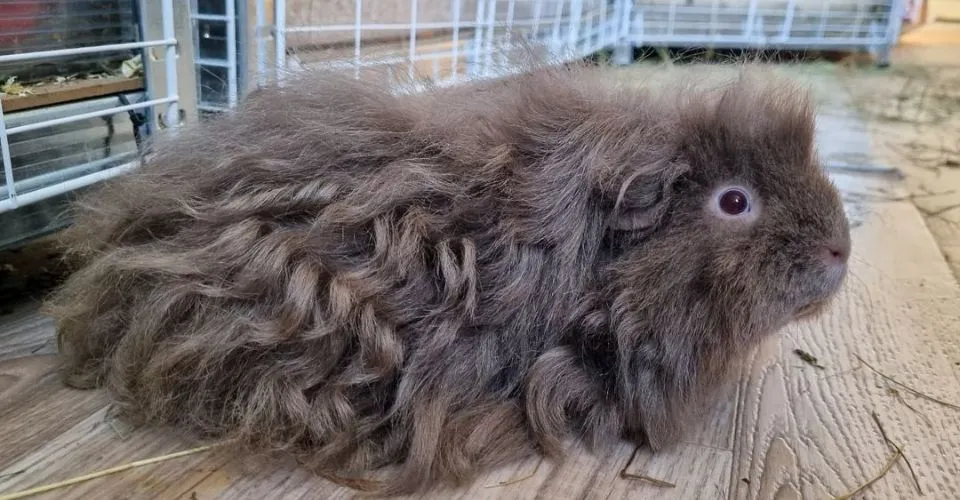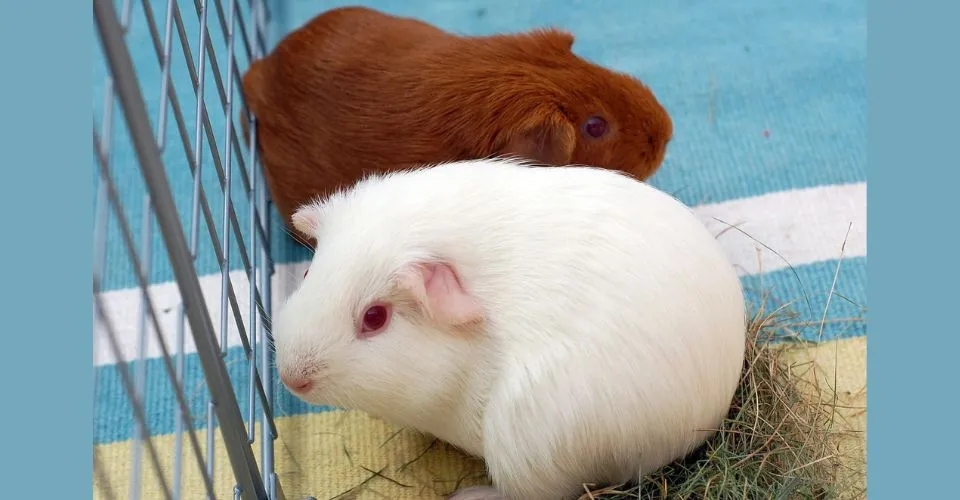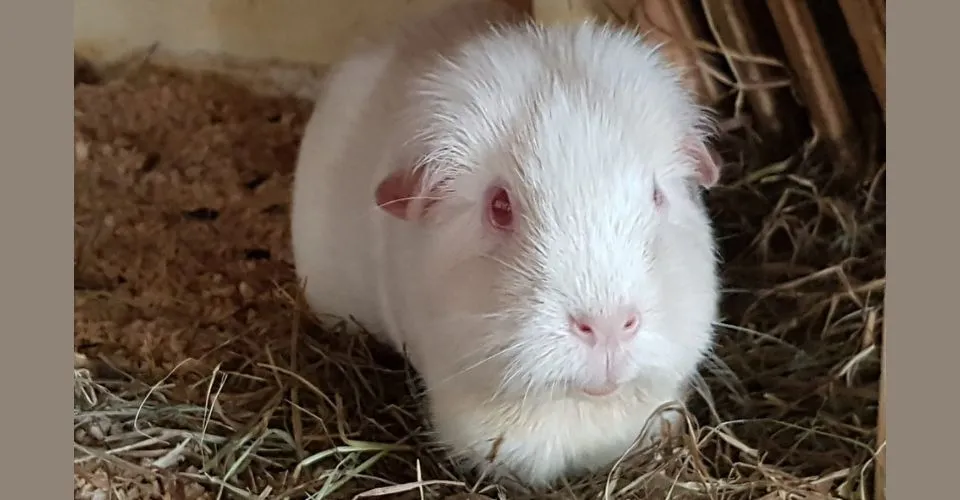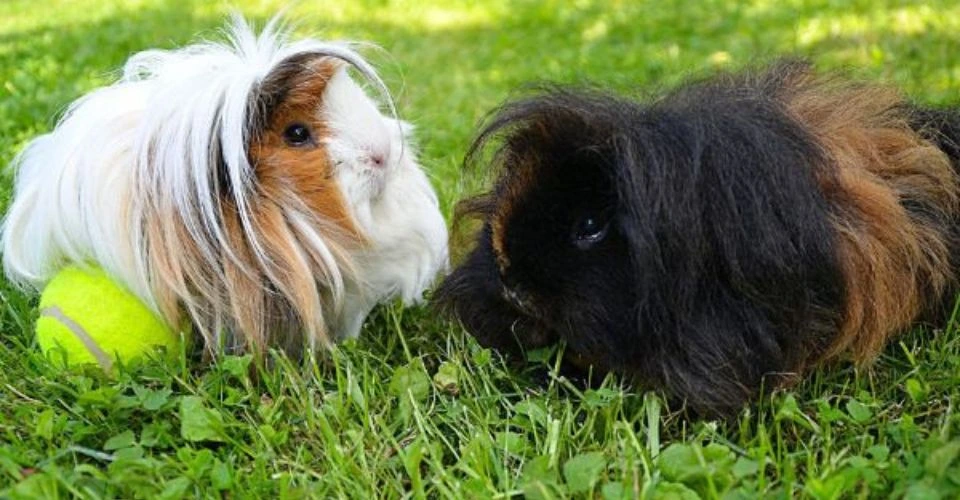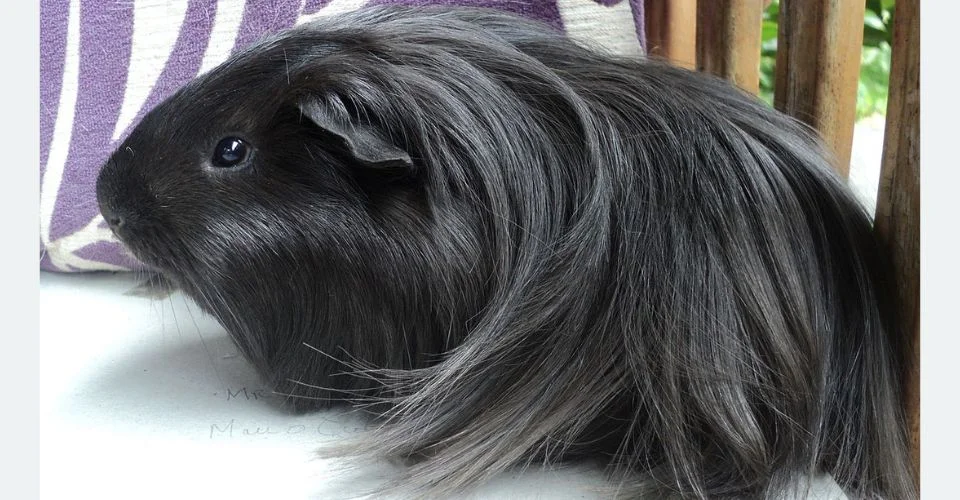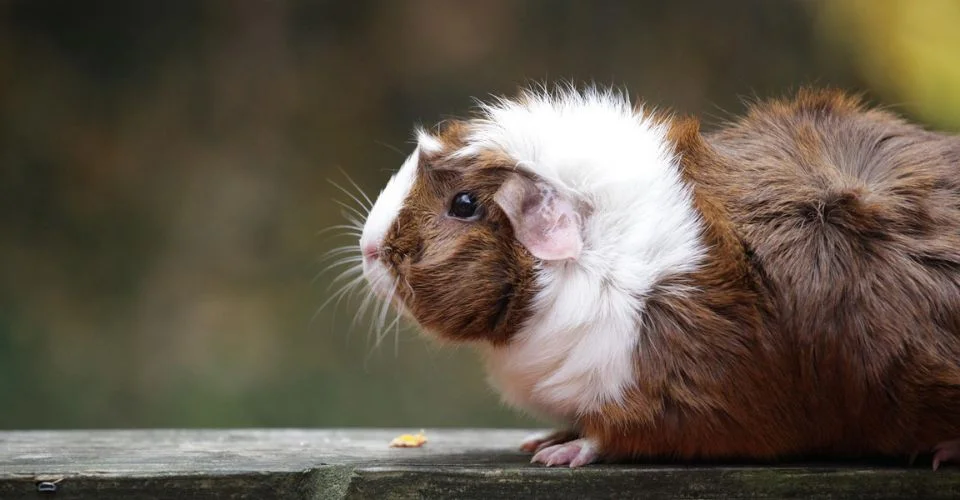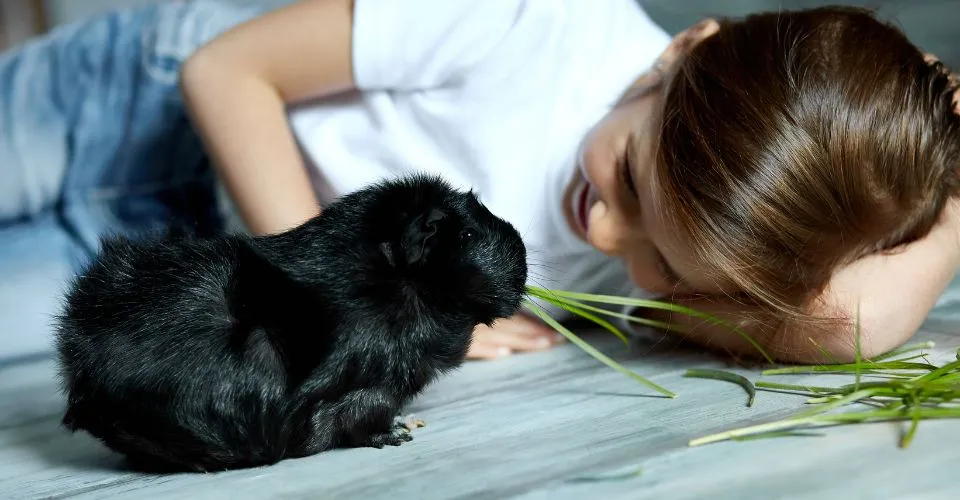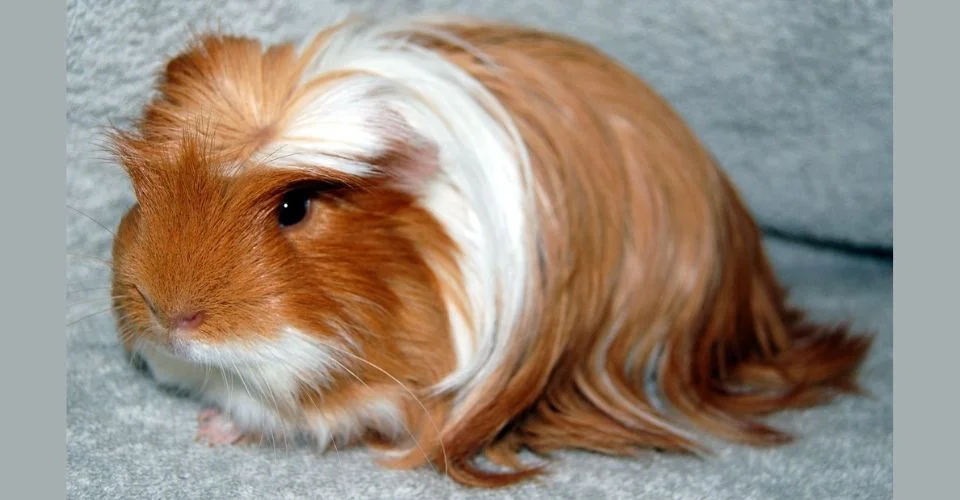Also known as Merino Peruvian, English Merino, and Merino Rexoid, Merino is a long-haired guinea pig breed with curly hair. Besides their long and fuzzy curly-haired coat, Merino guinea pigs are loved for their friendly and affectionate temperament. Merino cavies are easy-going, but they have a bit of high upkeep due to their curly longhair coats that seem to attract all the debris and mud around.
Watching this curly-haired guinea pig, it is hard to resist the temptation of bringing a Merino guinea pig home. But before you get yourself a Merino guinea pig on a whim, it is strongly advised that you first familiarize yourself with the Merino guinea pig breed. So that you know what you are getting yourself into.
Merino Guinea Pig
Merino is a curly-long-haired guinea pig breed, resembling Texel guinea pigs. They look so alike that it would be near impossible for an untrained eye to tell them apart. One of the Merino guinea pigs’ distinguishing features is a short forehead crest.

Take a quick look at the Merino guinea pig breed overview below before we dive into the details.
| Merino Guinea Pig Breed Overview | |
| Scientific Name | Cavia porcellus |
| Other Names | Merino Rexoid, English Merino, Merino Peruvian, Merino Cavy |
| Length | 4 to 11 inches |
| Weight | 1.5 to 2.5 pounds |
| Lifespan | 4 to 6 years |
| Coat Color | Variety of colors and color combinations including bicolor, tricolor, tortoiseshell |
| Maintenance | High-maintenance |
| Diet | Herbivores (timothy hay) |
| Cage | At least 30×60 inch enclosure |
| Ideal temperature range | Around 70° F |
| Temperament | Playful, calm, loving |
| Suitable for | Experienced guinea pig owners |
| Merino Guinea Pig Scoreboard | |
| Friendly | 4.5/5 |
| Like to be held | 4/5 |
| Grooming Requirements | 5/5 |
| Energetic | 4.5/5 |
| Good with other Guinea Pigs | 5/5 |
| Good with Children | 4/5 |
Merino Guinea Pig History
Because of the undocumented history, we cannot really say where the Merino guinea pig came from. But like all other guinea pigs breeds, they have their roots in the Andes regions of South Africa. Though there is no substantial evidence, it is widely claimed that Merino guinea pigs are a cross between Texel guinea pigs and Coronet guinea pigs. Perhaps, Merinos got their long curly-haired coat from Texel guinea pigs and the crown-like crest sitting on their forehead from the Coronet guinea pigs.
While Merino guinea pigs are not recognized as a separate breed by the American Cavy Breeders Association, they are officially recognized by the British Cavy Council.
Did You Know? Merino is originally a breed of domesticated sheep in Spain. It is widely believed that Merino guinea pigs got their name because of their sheer resemblance to Merino sheep.
Merino Guinea Pig Personality and Temperament
Merino guinea pigs are sweet, gentle, and playful creatures. They make great pets.
Merino guinea pigs are very sociable. It is strongly advised that they are kept in pairs. They love to interact with their cage mates, and after getting to know their loving owners, they start warming up to them as well. They love to be held and petted by their loving owners and children. They don’t bite unless they feel threatened or anxious. It is strongly advised that you properly socialize your Merino guinea pig at a young age.
Merino Guinea Pig Appearance
Like most other guinea pig breeds, Merinos have short cobby bodies. They have long curly-haired fur just like Texel guinea pigs but also have a swirl of short hair rosette on their forehead and are considered a rexoid equivalent of Coronet guinea pigs.
Merino Guinea Pig Size
Merino guinea pigs are one of the smallest guinea pig breeds measuring between 4 to 11 inches and weighing 1.5 to 2.5 pounds. Given their long fur, they may look comparatively bigger than they actually are. Male Merino guinea pigs are comparatively bigger than their female counterparts.
Merino Guinea Pig Coat
Merino guinea pigs have dense, long curly-haired coats showing rexoid characteristics. Their coat comes in a variety of colors and color combinations ranging from solid white and black and interesting color combinations like bicolor, tricolor, and tortoiseshell. There is just no limit when it comes to merino guinea pig fur color.
According to British Cavy Council, Merino guinea pigs can be shown in any color or color combination.
Merino’s coat will be springy but soft in touch. You will love to comb your fingers through your Merino’s fuzzy hairs. While your fluffball would appreciate you petting him sometimes, they don’t like to be held for long periods. So, you are advised to hold your guinea pig for a short time.
How to Care for a Merino Guinea Pig?
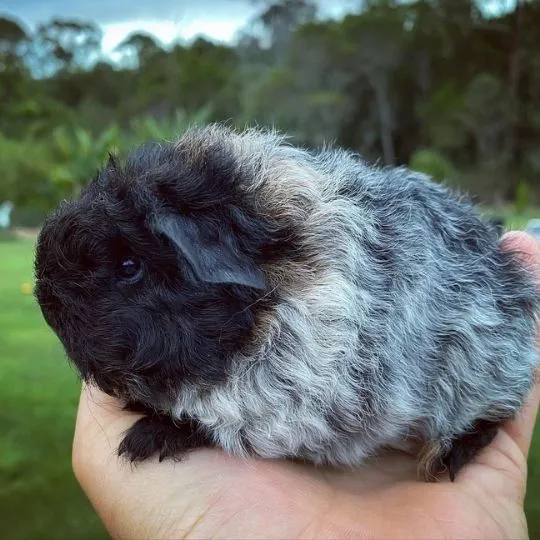
The long-haired curly coat makes Merino guinea pigs fluffy and adorable creatures; it also makes them a really high-maintenance guinea pig pet. Had it not been for the grooming challenges posed by the long-haired coat of Merinos, they would have made a perfect choice for children as their first pet guinea pig.
Feeding Merino Guinea Pig
Merino guinea pigs don’t have any special dietary requirements. So, if you have fed a guinea pig before, you don’t have to worry about feeding Merino guinea pigs.
Like other guinea pig breeds, you must provide a constant supply of fresh timothy hay to your guinea pig. Munching on hay would not only take care of the always-growing guinea pig’s teeth but would also provide the necessary fibers to your guinea pig to help in bowel movement. Besides a constant supply of hay, you should also provide some amount of guinea pig food pellets to your Merino.
As Merino guinea pigs cannot make their own vitamin C, you must provide them with vitamin C supplements. You can feed them guinea pig-safe fruits and veggies to make the guinea pig diet interesting. That said, you should only give your guinea pig fruits and veggies in small amounts, occasionally as a treat.

Merino Guinea Pig Grooming
The long curly-haired coat that makes Merino guinea pigs most desirable also makes them high-maintenance pets. Their curly-haired coats seems to trap everything they touch, requiring daily brushing.
Daily brushing will is necessary to remove debris from Merino’s coat and helps keep their coats from knotting and matting. At the same time, you should be as gentle as you can. You don’t want to cause any pain to your Merino guinea pig, and you definitely don’t want them to associate grooming sessions with a negative experience. You can also consider offering delicious treats to your guinea pig during the grooming sessions.
Besides daily coat brushing, you will also have to regularly bathe your Merino guinea pig at least once a month. While bathing your guinea, you should be very careful; you don’t want water to scare them off. After bathing them, you should dry them immediately. Otherwise, they may start vibrating due to cold.
Besides coat brushing and bathing, your Merino guinea pigs will also need regular nail trimming. Overgrown guinea pig nails often curl and make it hurtful for guinea pigs even to walk.
You should also check your guinea pig’s eyes and ears for any discharge build-up or any other sign of infection.
Merino Guinea Pig Enclosure Set-up
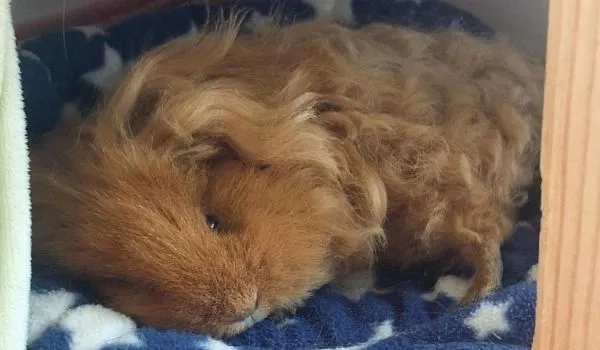
Merino guinea pigs need a spacious cage filled with interesting toys and hideouts. Like other guinea pig breeds, you should also know that Merinos need a companion guinea pig to be happy. Therefore, you should try to keep them in pairs. And if you are keeping a pair, you should make sure that you are providing them a guinea pig cage for 2. Guinea pig cages for two should be 7.5 square feet at least, and the preferred cage is 7.5 square feet. That said, you can make guinea pigs as big as you can. More spacious the guinea pig cage, the better. You can also place separate hides for each guinea pig.
Should You Get a Merino Guinea Pig or Not?
| Should You Get a Merino Guinea Pig? | |
| Pros | Cons |
| Rare and a unique guinea pig breed | High upkeep |
| Highly sociable and extremely friendly | Prone to knotting and matting |
| Highly intelligent and easier to train | Not suitable for children or inexperienced guinea pig owners |
